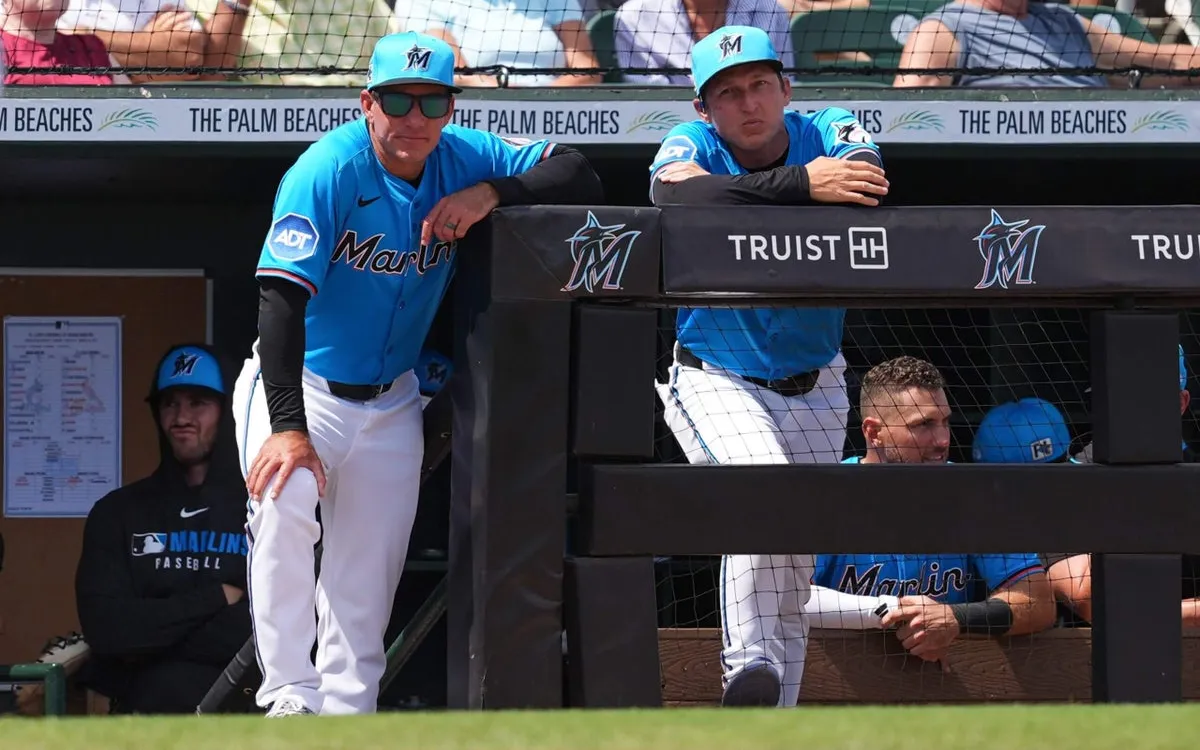
The New York Yankees made headlines with a franchise-record nine-home run game against the Milwaukee Brewers on Saturday. The spotlight not only shone on the players but also on the innovative bats they used during this remarkable 20-9 victory. These uniquely shaped bats are the product of two years of extensive research and experimentation, spearheaded by Aaron Leanhardt, a former physicist from the Massachusetts Institute of Technology (MIT) who has transitioned into a coaching role.
At the core of this innovative bat design is the question, “Where are you trying to hit the ball?” Leanhardt emphasized the importance of understanding the point of contact for each player. “Where are you trying to make contact?” he asked in a phone interview. Leanhardt, who began his journey with the Yankees’ minor-league hitting department in 2022, has brought this cutting-edge technology to the major leagues, where players like shortstop Anthony Volpe have already tested these bats in games.
So far, as many as five Yankees players are expected to utilize these custom-made bats early this season, according to outfielder Cody Bellinger. The bats feature a torpedo-like shape, specifically designed to match player preferences and ensure that the densest part of the bat aligns with the area where they most frequently make contact with the baseball.
Concerns about compliance with Major League Baseball (MLB) regulations have been addressed. An MLB spokesperson confirmed to The Athletic that these innovative bats do not violate any existing rules. According to MLB Rule 3.02, a bat must be a smooth, round stick not exceeding 2.61 inches in diameter at its thickest point and no longer than 42 inches. It also states that experimental bats can only be used after receiving approval from the league.
When asked if he could be credited as the inventor of this bat technology, Leanhardt humbly acknowledged that it was a collaborative effort involving coaches, players, MLB, and bat manufacturers. “Credit goes to those who take it,” he said, adding that he would gladly accept recognition but emphasized the team effort involved. A Yankees official noted that Leanhardt deserves a significant portion of the credit for this innovation.
Leanhardt’s path to baseball is anything but conventional. He holds a bachelor’s degree in electrical engineering from the University of Michigan and a Ph.D. in physics from MIT. After serving as a physics professor from 2007 to 2014, he shifted his focus to coaching in the Atlantic League in 2017, eventually joining the Yankees in 2018. In 2024, he became the Yankees' first “major league analyst,” tasked with integrating quantitative data with on-field performance.
When asked why he left academia for baseball, Leanhardt reflected, “I think that’s one of the cool things about sports is it’s very competitive. Guys are willing to push the envelope. It’s just an opportunity to take my background to an area and find ways to innovate.”
Leanhardt noted that conversations with players revealed two primary concerns: the desire to make more contact with pitches and to strike the ball using the bat’s “sweet spot.” Typically located six to seven inches down from the tip of the bat, the sweet spot is where hitters achieve optimal performance. Leanhardt's innovative approach involved redistributing weight from the tip of the bat to the sweet spot, enhancing the potential for contact and power.
“The bat speed should stay the same,” he explained. “Maybe the bat speed can even increase a little bit depending on how you want to redesign the bat. But ultimately you’re getting a fatter barrel, a heavier barrel at the sweet spot. So in some sense, you can have your cake and eat it here too.”
While Leanhardt refrained from discussing specific players’ experiences with the new bats, Yankees designated hitter Giancarlo Stanton mentioned earlier this month that adjustments to his bat may have contributed to his current injury issues. However, Leanhardt deferred questions regarding Stanton's situation to the Yankees' medical staff, emphasizing the complexities of player health and performance.
Leanhardt expressed excitement about the gradual evolution of bat design, noting that it has taken years for a radically new concept to emerge. He likened the transition from heavy wooden bats to lighter alternatives in the early 20th century to the current advancements in bat technology. “Ultimately, it just takes people asking the right questions and being willing to be forward-thinking,” he remarked.
The buzz surrounding these innovative bats has sparked significant interest, particularly following the Yankees' remarkable performance. Leanhardt noted that while some players began using these bats last season, the entire industry has recently taken notice, leading to increased adoption among players. “Obviously, Saturday’s performance threw a whole lot of attention to it,” he stated.
Bringing these bats from design to production required extensive coordination. Leanhardt emphasized the importance of establishing relationships with bat manufacturers and MLB officials to ensure the new designs meet the necessary standards. “You really just are communicating with each company and trying to find the person who really knows the wood and knows how to turn the wood on a lathe,” he explained.
In summary, the innovative bat technology utilized by the New York Yankees represents a significant advancement in baseball equipment, combining scientific research with player preferences to enhance performance on the field. As the season progresses, it will be intriguing to see how these changes impact the game.